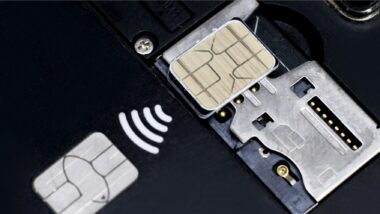Mark Roberti, editor of RFID Journal, which covers all forms of radio frequency identification, including NFC, has sent us questions about NFC that he hears from readers. We answer those questions below.
 What are NFC technology providers doing to expand the consumer uses of NFC technology?
What are NFC technology providers doing to expand the consumer uses of NFC technology?
NFC technology providers are doing various things to encourage consumer usage. On the one hand they are providing application development kits to give people a tool with which they can come up with the next generation of mobile contactless services such as mobile coupons, loyalty, ticketing and others. As with other platforms such as Android or iOS, as soon as the environment is put in place to let developers free their creativity we are met by services that we never imagined possible.
On the other hand, they are also putting in place the complete infrastructure and associated processes to securely deploy those services. This is not just a technology issue for example in terms of releasing enough NFC phones and retail terminals but there is also the need for business processes to be established between diverse industry actors, in particular mobile operators and players in the banking and transport industries. The last point increasingly calls for a trusted 3rd party, often known as a Trusted Service Manager, to intermediate between the different markets and services.
- Is there a chicken and egg issue — consumers won’t buy NFC phones until there are applications they can use and there won’t be applications until there are more phones? How can this challenge be overcome?
Up until this year, we could see this was an issue, especially as many of the deployments outside of Asia had been pilots. 2011 will be different though, as many smartphones will be released with embedded NFC technology. As with the arrival of 3G handsets a few years ago, it started at the high end followed by a trickledown effect with NFC set to become a de-facto feature in many handsets. For example, NFC chip shipments will reach 785 million units in 2015, according to a report from IMS Research in mid-2011.
 Going back to the pilots, the service providers tested not only if the services work but also which applications generated the most interest. In fact, all of the services from transport to payment and interactive street ads had excellent acceptance. This was the case in Nice where the project was deemed a success, as you can see in a recent article in NFC News. Thanks to this experience and the arrival of more handsets, application developers will be increasingly attracted to the NFC market.
Going back to the pilots, the service providers tested not only if the services work but also which applications generated the most interest. In fact, all of the services from transport to payment and interactive street ads had excellent acceptance. This was the case in Nice where the project was deemed a success, as you can see in a recent article in NFC News. Thanks to this experience and the arrival of more handsets, application developers will be increasingly attracted to the NFC market.
We are also seeing significant investment from mobile operators, starting last year and rising in 2011. This covers infrastructure upgrades (back office, customer care, OTA – Over-the-Air – platforms), new secure elements (the trusted device such as the UICC) and phones. They now understand they have to create an attractive environment for service providers.
An example of recent operator activity is the deal between Japan’s NTT DoCoMo and South Korea’s KT Corp, according to Cellular News they:
have announced a joint agreement to develop cross-border services for mobile payments based on NFC technology, which they will launch in their respective markets of Japan and South Korea from around the end of 2012.
- Will NFC phones be used for access control in the near future, instead of separate access control cards?
One of the main advantages of NFC is the convergence it offers i.e. turning the phone into a multi-application device. Access control is clearly one of the targeted use cases for NFC. NFC technology is already compatible with many contactless access readers deployed in the field. Access control has already been piloted in hotels for example where guests can have their room key downloaded to their phone and bypass queues at check-in.
- Are financial transactions the main use of NFC for consumers, or do you envision other applications?
 Beyond payment, we have seen the development of many other applications in the fields of transport, ticketing, access control, loyalty, coupons, service discovery (tag reading), mobile marketing and social networking. In the case of a mobile coupon, you would see an offer on a “smart poster” in the street, download the discount to your phone and then redeem it in the shop by waving your phone at the payment terminal. It can also be used as an opportunity for “Retail Marketing” where merchants can further promote products/goods and get better customer information from those consumers who use their NFC phone in store. So there are many different uses that we envision – financial transactions are but one out of many highly useful benefits.
Beyond payment, we have seen the development of many other applications in the fields of transport, ticketing, access control, loyalty, coupons, service discovery (tag reading), mobile marketing and social networking. In the case of a mobile coupon, you would see an offer on a “smart poster” in the street, download the discount to your phone and then redeem it in the shop by waving your phone at the payment terminal. It can also be used as an opportunity for “Retail Marketing” where merchants can further promote products/goods and get better customer information from those consumers who use their NFC phone in store. So there are many different uses that we envision – financial transactions are but one out of many highly useful benefits.
- Are there any interesting trials or deployments scheduled for 2011?
The most recent deployment was made by Barclaycard, Orange, and T-Mobile (the Everything Everywhere JV) in the UK where they announced that their customers would be able to start making payments with their phones by early summer 2011. Since the launch of the Oyster card in London, the UK has shown itself as an innovator in contactless payment and therefore we see strong consumer demand.
There have also been many other announcements from operators in Japan, while in France the successful trial in Nice will be rolled out into 9 other cities. The list goes on with many other initiatives like in Turkey and Singapore.
We’d like to thank Mark Roberti, editor of RFID Journal for the interesting set of questions and overall feel it’s an exciting time and it’ll be interesting to follow all these developments.


